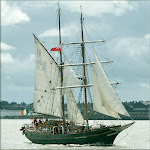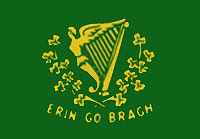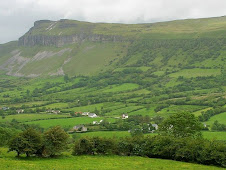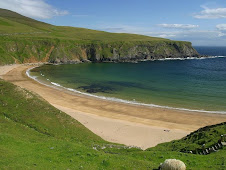 Today, at precisely 13.02 h local time (12.02 pm GMT), the 2008/2009 Vendée Globe Race was started in the port of Les Sables d'Olonne on the French Atlantic coast.
Today, at precisely 13.02 h local time (12.02 pm GMT), the 2008/2009 Vendée Globe Race was started in the port of Les Sables d'Olonne on the French Atlantic coast.Despite severe weather conditions about 300,000 people had gathered at the port to see the 30 competing yachts off. Many of the spectators were lined up tight on the seawalls, ignoring the rain, storm and high waves, to bid the skippers a cheerful farewell.
The Vendée Globe is a non-stop sailing event for single-handed yachts, covering an average of 27,000 miles, and regarded as the toughest challenge a sailor can face on this planet.
Unlike the Velux Oceans Race, which breaks the event up into three legs, the Vendée Globe goes non-stop across some very inhospitable stretches of ocean. It is the ultimate test of both skipper and equipment.
More than a third of the boats that entered the 2004/05 race were forced to retire, and there were even fatalities in the 1992/93 and 1996/97 events.
 From the start at the French coast the race goes south through the Atlantic, passing Madeira, the Canaries and the Cape Verdes, and then along the eastern coast of South America around the feared Cape Horn into the Pacific. The course continues then across the southern Pacific and - leaving Australia to the north - into the southern Indian Ocean, sailing through the infamous and dangerous 'roaring forties' past the Kerguelen Islands towards the Cape of Good Hope on the southern tip of Africa, but bypassing it in a fair distance. Halfway between Africa and South America then the course will be changed to straight north, and the final stretch - known among the competitors as 'the home run' - begins, leading all the way back to Les Sables d'Olonne
From the start at the French coast the race goes south through the Atlantic, passing Madeira, the Canaries and the Cape Verdes, and then along the eastern coast of South America around the feared Cape Horn into the Pacific. The course continues then across the southern Pacific and - leaving Australia to the north - into the southern Indian Ocean, sailing through the infamous and dangerous 'roaring forties' past the Kerguelen Islands towards the Cape of Good Hope on the southern tip of Africa, but bypassing it in a fair distance. Halfway between Africa and South America then the course will be changed to straight north, and the final stretch - known among the competitors as 'the home run' - begins, leading all the way back to Les Sables d'OlonneThe Vendée Globe is also essentially a French event, created and developed by tough French yachtsmen, who have so far always won the race, which is very strongly supported by the French public and media. (Some commentators even call it "the Tour de France of the Sea".)
Even though there are more foreign sailors competing in recent races, 17 - more than half - of the skippers in this year's event are French.
With seven competitors - including the only two women - the UK has the second-largest national contingent in the race. There are also two Swiss skippers, and one each from Austria, Canada, Spain and the USA.
Although the skippers are alone in their boat and can never sleep longer than 20 minutes at one time, they now have quite considerable assistance from many different gadgets. This technology makes sailing the yacht easier and it also means that the skippers can be in contact with their onshore support team around the clock.
Demands to update blogs, video diaries, and calls to do live interviews with the media mean that some of the equipment has to be very advanced. It also has to be robust. Boats are frequently battered by the waves and salt spray will wreck any exposed electrical equipment.
 One of the seven British yachts that entered the race this year - the Aviva (right) - is skippered by 35-year-old Dee Caffari (below left) from Fareham in Hampshire, the first woman who sailed single-handed the "wrong way" (against the prevailing winds) around the world two years ago.
One of the seven British yachts that entered the race this year - the Aviva (right) - is skippered by 35-year-old Dee Caffari (below left) from Fareham in Hampshire, the first woman who sailed single-handed the "wrong way" (against the prevailing winds) around the world two years ago. On board her 72-foot boat, designed for a crew, she struggled for six months to complete this long and dangerous voyage around the planet in 178 days, 3 hours and 5 minutes. She thus entered the history books and earned herself great respect and admiration in the sailing community.
On board her 72-foot boat, designed for a crew, she struggled for six months to complete this long and dangerous voyage around the planet in 178 days, 3 hours and 5 minutes. She thus entered the history books and earned herself great respect and admiration in the sailing community. The second female skipper in this year's event is 34-year-old Samantha Davies (right), originally from Portsmouth, but now living in Concarneau in France.
The second female skipper in this year's event is 34-year-old Samantha Davies (right), originally from Portsmouth, but now living in Concarneau in France."I'm really excited and relieved the race is finally here. I've been preparing for nearly two years and everything is pretty much ready," she said before the start.
"The most important thing for me is to finish. There are 20 new yachts in this race and Roxy - my boat - is quite an old lady. Realistically it will be really hard to win, and I'm very humble about being in this race."
 The Roxy (right) might be "an old lady", but she is a yacht with a very serious pedigree. She won the last two Vendée Globe races under previous skippers and having a different name then.
The Roxy (right) might be "an old lady", but she is a yacht with a very serious pedigree. She won the last two Vendée Globe races under previous skippers and having a different name then.It remains to be seen if her good luck continues and if she can win a third time in a row, which would be not only the first victory for a female skipper, but also the first time a non-French competitor in the Vendée Globe wins the race. But until then a lot can happen, and the approximately three months at sea will be hard for all 30 particpants, in particular the two English women, who are both first-time competitors in this challenging event.
They hope to follow in the footsteps of the now famous Ellen MacArthur, who - then aged 25 - came second in the 2001/02 Vendée Globe race and broke in 2005 the world record for the fastest solo circumnavigation of the globe.
The Emerald Islander
UPDATE
One of the two Swiss sailors - Bernard Stamm - had already some bad luck. His yacht Cheminées Poujoulat collided with a French fishing boat 72 miles after the start and had to return to port with a broken bowsprit. Stamm is however optimistic that repairs can be carried out fast and has declared he will not give up and sail on again as soon as possible. I wish him the best of luck.







































3 comments:
so how to they refuel?
this story is fabulous, so women can sail
If you fancy following the Vendee in a bit more detail I'm writing a blog called http://jonnymalbon.com. I'm Jonny's brother and we're covering the 26,000 mile race with a blog and Twitter - Jonny is 'tweeting' from the boat as he goes and it goes directly onto the blog. Come and let us know what you think. It's all a bit of an experiment but it's fun.
Tim Malbon
Post a Comment